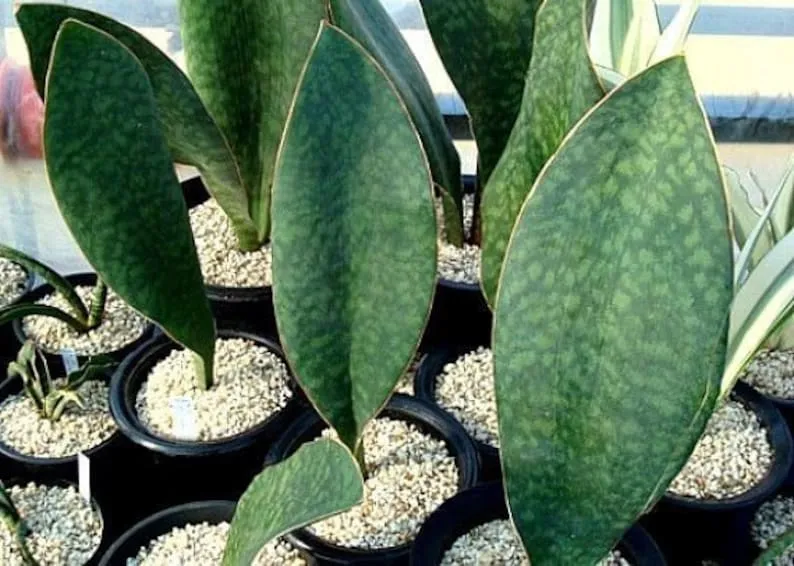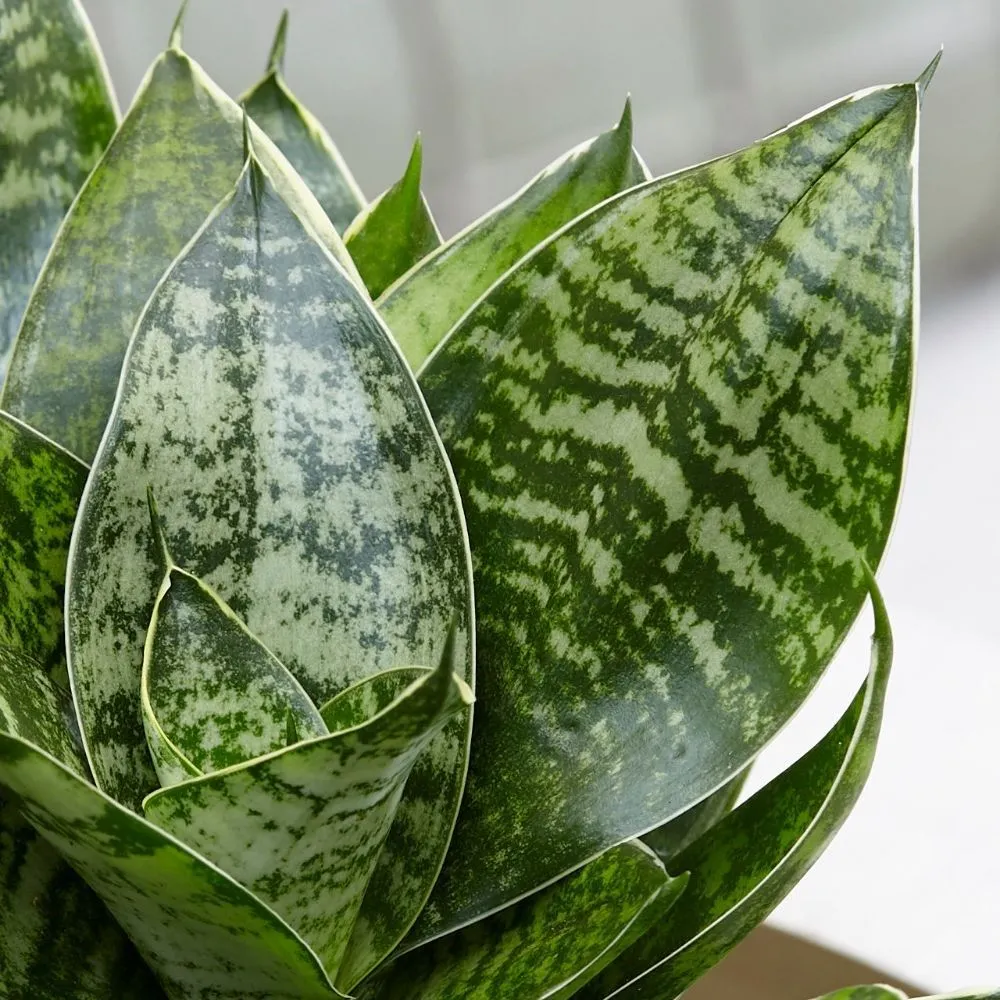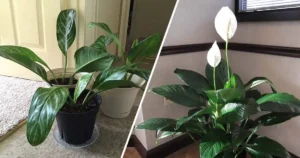Plants bring a natural touch to our lives, but let’s face it—not everyone has the time or energy for a high-maintenance indoor garden. If you’re looking for a beautiful yet low-effort plant, Sansevieria masoniana, often called the Whale Fin Snake Plant, is the answer. Known for its broad, striking leaves, this plant doesn’t just elevate your space; it requires minimal care. Whether you’re a plant enthusiast or a beginner, you’ll find this easy-care house plant to be the perfect fit. In this guide, you’ll discover everything you need to know about keeping your Whale Fin Snake Plant happy and healthy.
On This Page
What Makes Sansevieria Masoniana So Special?
Sansevieria masoniana isn’t just another house plant; it’s a statement. The plant’s large, paddle-shaped leaves look like a whale fin rising out of the soil, giving it a unique appearance that can easily become a centerpiece in your home.
Unique Appearance
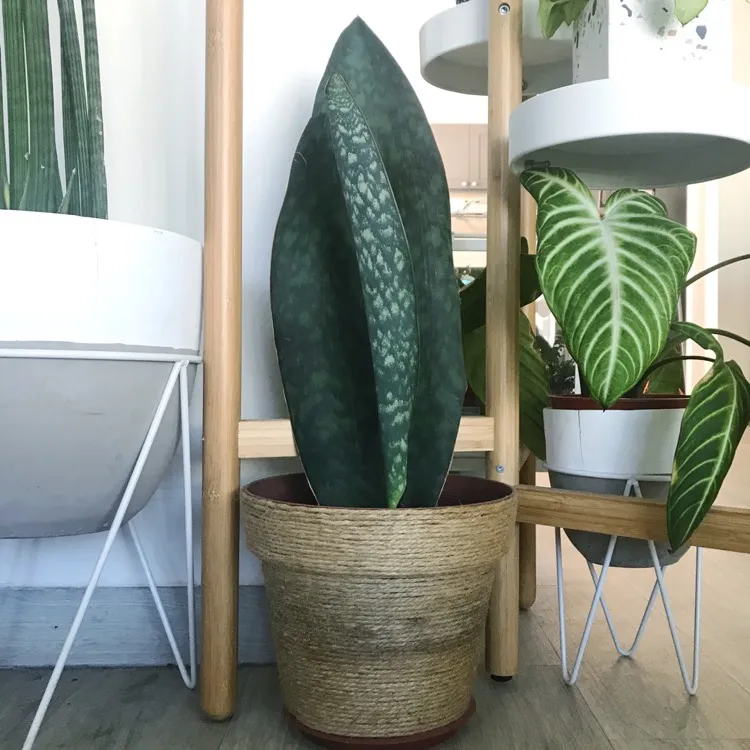
The Whale Fin Snake Plant stands out with its tall, paddle-like leaves, often featuring attractive, subtle variegations and textures. This leaf design adds elegance to any room, providing a fresh, exotic feel that’s far from ordinary. Unlike many other plants, Sansevieria masoniana can grow tall while maintaining a compact base, making it ideal for small spaces or tight corners.
Exceptional Durability and Hardiness
What sets this plant apart is its resilience. Whale Fin Snake Plants adapt well to various environments, from bright indirect light to low-light spaces. And if you tend to forget watering schedules, you’re in luck: this plant’s succulent-like qualities make it drought-resistant and forgiving of missed waterings.
Benefits of Adding a Whale Fin Snake Plant to Your Home
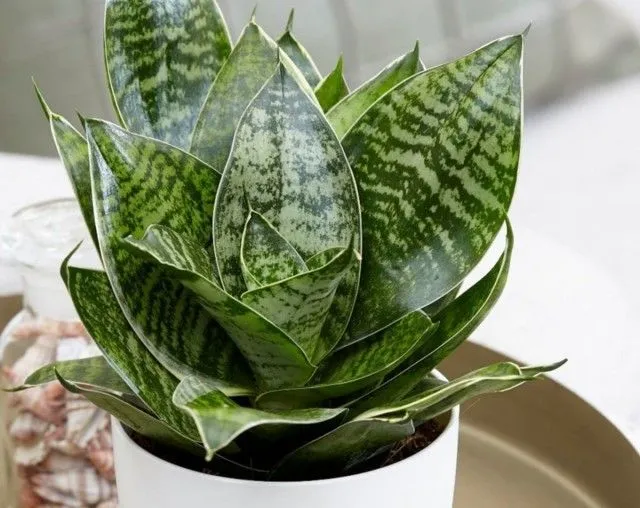
Low Maintenance
Perfect for a busy lifestyle, Sansevieria masoniana is as low-maintenance as houseplants come. It doesn’t require constant attention or perfect conditions. If you’re juggling a packed schedule or simply don’t have a green thumb, this plant will thrive with minimal intervention, making it one of the easiest plants to care for indoors.
Air-Purifying Properties
Houseplants do more than beautify—they improve indoor air quality, and the Whale Fin Snake Plant is a powerhouse in this regard. Like its relatives in the Sansevieria family, it’s effective at removing common household toxins like formaldehyde and benzene. By adding one to your home, you’re not only boosting aesthetics but enhancing air purity.
Adds Style and Personality to Your Space
Looking to add some flair? The Whale Fin Snake Plant pairs well with various interior styles, from minimalist and Scandinavian to rustic and eclectic. Its bold leaf structure adds a hint of tropical elegance, creating an eye-catching focal point wherever you place it.
How to Care for Sansevieria Masoniana
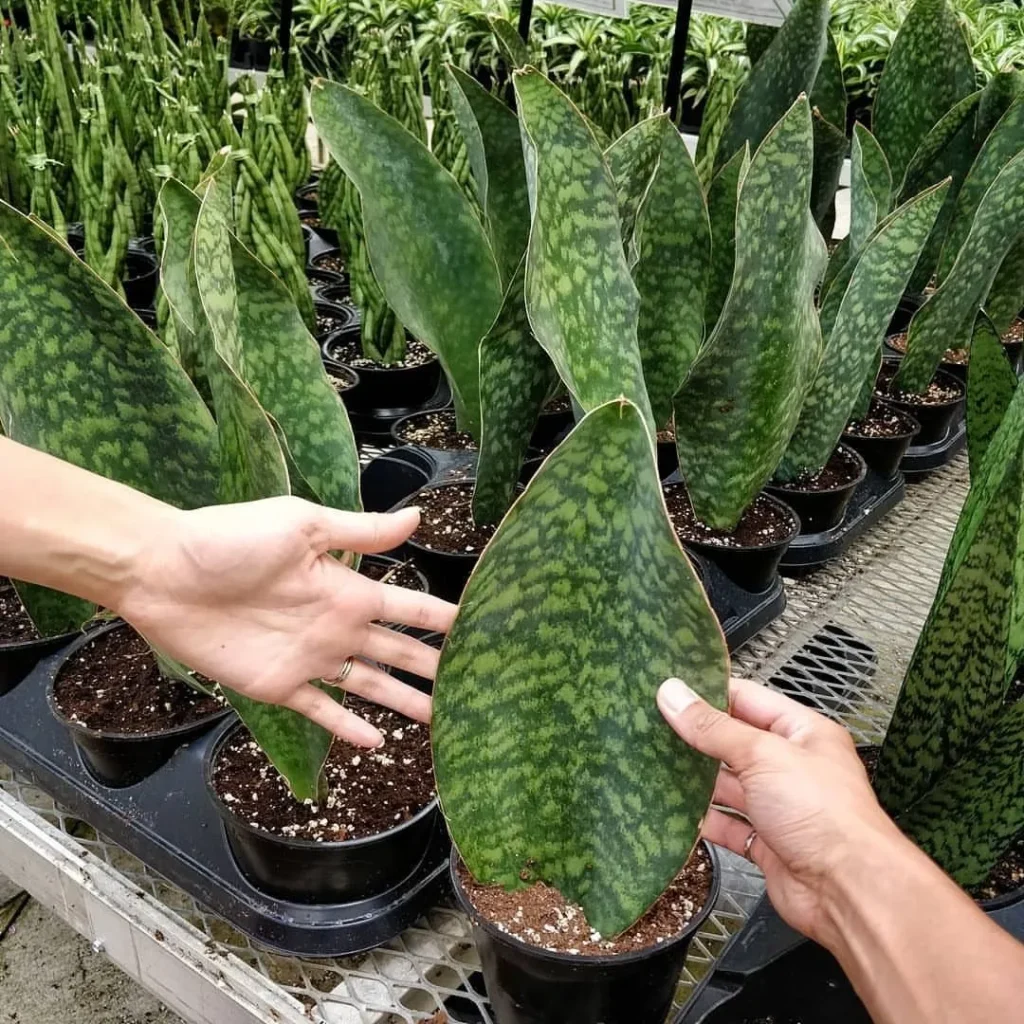
Light Requirements
Whale Fin Snake Plants thrive best in bright, indirect light. While they can tolerate lower-light conditions, placing them in indirect sunlight ensures vibrant growth. Just be mindful not to expose them to direct sunlight for extended periods, as this can scorch their leaves.
Watering Needs
Sansevieria masoniana is sensitive to overwatering, so be sure to allow the soil to dry out between waterings. Generally, you should only water when the top inch of soil feels dry to the touch. During the winter months, reduce watering frequency since the plant’s growth naturally slows down, and it requires less moisture.
Pro Tip: If you’re unsure about watering frequency, remember it’s better to underwater than to overwater. Too much water can lead to root rot, a common issue with succulents and similar plants.
Soil and Potting Requirements
To keep your Whale Fin Snake Plant thriving, use a well-draining, sandy soil mix. Cactus or succulent soil works well, as it’s designed to prevent water retention, which this plant needs. You’ll only need to repot it every 2-3 years, or when it becomes root-bound, as it has a slow growth rate.
Ideal Temperature and Humidity
Sansevieria masoniana is comfortable in most indoor conditions, tolerating temperatures between 60-85°F (15-29°C). Since it’s native to warm, dry regions, it can handle low humidity levels, making it ideal for indoor spaces.
Common Issues and How to Fix Them
Even with easy-care plants, minor issues may arise. Here’s how to address some of the most common ones.
Yellowing Leaves
If you notice yellow leaves, overwatering is usually the culprit. Adjust your watering routine, and make sure the soil dries out properly between waterings. Ensuring proper drainage is key to avoiding yellowing.
Brown Leaf Tips
Brown tips can result from low humidity or inconsistent watering. While Sansevieria masoniana doesn’t need much humidity, dry indoor air, especially in winter, can occasionally cause browning. Try misting lightly or placing your plant near a humidity tray if this becomes an issue.
Pest Management
Though resilient, this plant can sometimes attract pests like spider mites or mealybugs. To prevent infestations, inspect your plant’s leaves periodically. If you spot pests, wipe down the leaves with a mild soap solution and rinse with clean water.
How to Propagate Sansevieria Masoniana
Ready to expand your plant collection? Propagating the Whale Fin Snake Plant is a simple way to grow new plants.
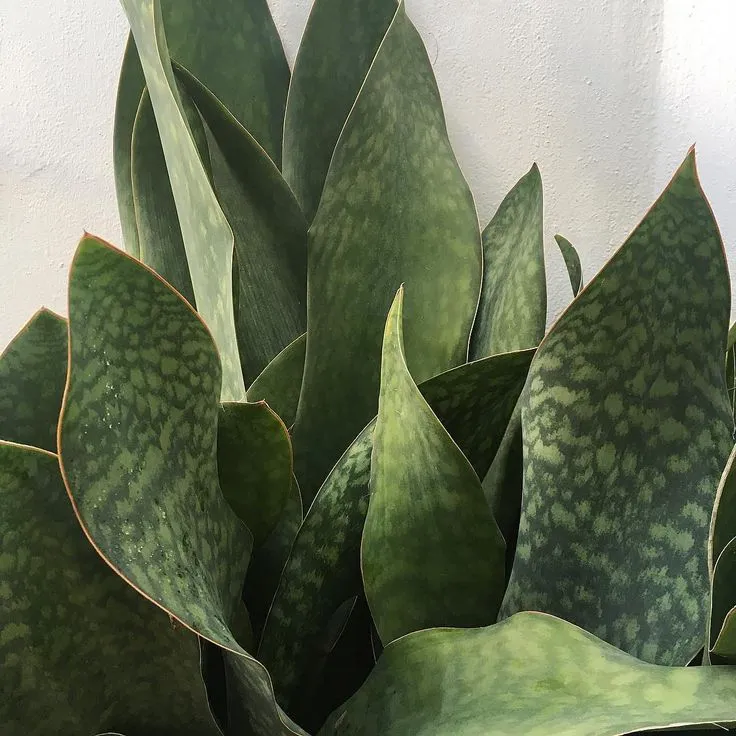
Propagation Through Leaf Cuttings
- Using a sharp, sterile knife, cut a mature leaf near the base.
- Let the cutting callus for a day or two to prevent rot.
- Place the cutting in well-draining soil and water sparingly.
Note: Propagation takes time, so be patient. It can take a few months for roots to fully develop and for new growth to emerge.
Propagation by Division
If your plant has grown several clusters, it may be time to divide it. This method works well for more mature plants:
- Gently remove the plant from its pot, being careful not to damage the roots.
- Separate clusters, ensuring each has at least one healthy leaf and root system.
- Replant each division in its own pot with fresh soil.
FAQ
How much sunlight does a Whale Fin Snake Plant need?
It does best in bright, indirect light but tolerates low-light spaces as well.
Is Sansevieria Masoniana safe for pets?
This plant is mildly toxic if ingested, so it’s best to keep it out of reach of pets and children.
How often should I water my Sansevieria Masoniana?
Usually, watering every 2-3 weeks is sufficient. Allow the soil to dry between waterings.
Sansevieria Masoniana at a Glance: Quick Care Table
| Care Aspect | Details |
|---|---|
| Light | Indirect sunlight; tolerates low light |
| Water | Water only when soil is dry |
| Soil | Well-draining cactus or succulent mix |
| Temperature | 60-85°F (15-29°C) |
| Humidity | Adaptable to low humidity |
| Toxicity | Mildly toxic to pets and humans |
Bring Home an Easy-Care, Stylish Companion
The Sansevieria masoniana, or Whale Fin Snake Plant, is an exceptional choice if you’re looking for a low-maintenance, stylish addition to your indoor space. With its resilience and adaptability, this easy-care house plant is perfect for any setting, from cozy apartments to spacious homes. Its unique look and health benefits make it a valuable addition that will bring beauty and fresh air to your home. So, if you’re ready to experience the joys of plant ownership without the stress, consider making this remarkable plant a part of your life.
Ready to make your home greener? Get your own Sansevieria masoniana and enjoy the beauty of easy-care plants that add style, purify the air, and fit seamlessly into your lifestyle.
